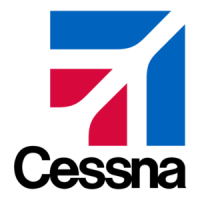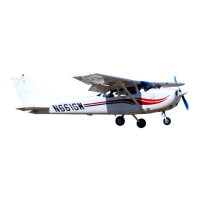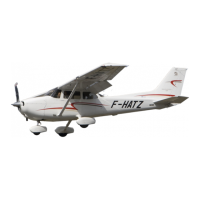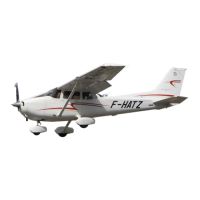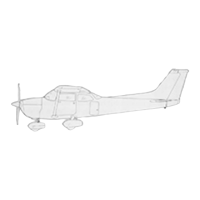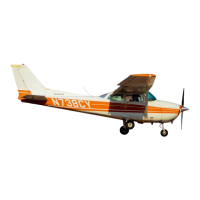CESSNA SECTION
7
MODEL 182T NAV Ill AlRPLAhlE AhlD SYSTEMS DESCRIPTION
FLIGHT
INSTRUNIENTS
The GI000 Integrated Cockpit System primary flight instrument
indications are shown on the GDU 1040 Primary Flight Display
(PFD). The primary flight instruments are arranged on the PFD in
the basic
"T"
configuration. The attitude indicator (Al) and horizontal
situation indicator (HSI) are centered vertically on the PFD and are
conventional in appearance and operation. Vertical tape-style
(scrolling scale) indicators with fixed pointers and digital displays
show airspeed, altitude, and vertical speed. The vertical indicators
take the place of analog indicators with a fixed circular scale and
rotating pointer.
Knobs, knob sets (two knobs on a common shaft) and membrane
type push button switches, found on the bezel surrounding each
GDU 1040 display, control COM, NAV, XPDR, and GPS avionics,
set BAR0 (barometric pressure), CRS (course), and HDG (heading),
and work various flight management functions. Some push button
switches are dedicated to certain functions (keys) while other
switches have functions defined by software (softkeys). A
softkey
may perform various operations or functions at various times based
on software definition.
Softkeys are found along the lower bezel of
the GDU 1040 displays.
AlTITUDE INDICATOR
The GI000 attitude indicator is shown on the upper center of the
PFD. The attitude indication data is provided by the GRS
77
Attitude and Heading Reference (AHRS) unit. The GI000 attitude
indicator provides a horizon line that is the full width of the GDU
1040 display.
The roll index scale is conventional with 10" graduations to 30"
and then 15" graduations to 60" of roll. The roll pointer is slaved to
the airplane symbol. The pitch index scale is graduated in 5"
increments with every
10" of pitch labeled. If pitch limits are
exceeded in either the nose-up or nose-down direction, red warning
chevrons will appear on the indicator to point the way back to level
flight. A small white trapezoid located below the roll pointer moves
laterally left and right to provide the slip-skid information previously
supplied by the skid indicator ball. The trapezoid should be
centered below the roll pointer for coordinated turns. The standby
(vacuum) attitude indicator is found on the lower center instrument
panel.
(Continued Next Page)
U.S. 7-15

